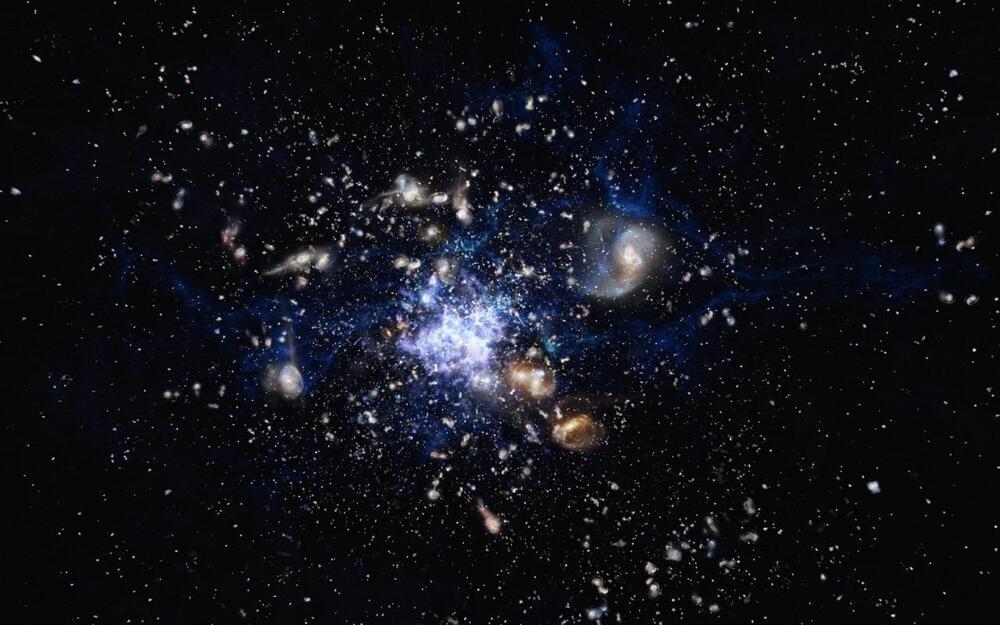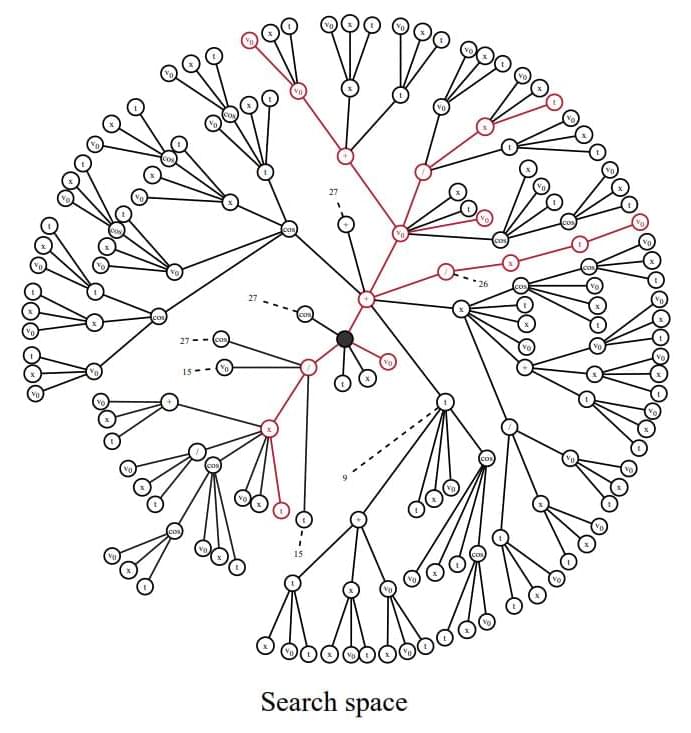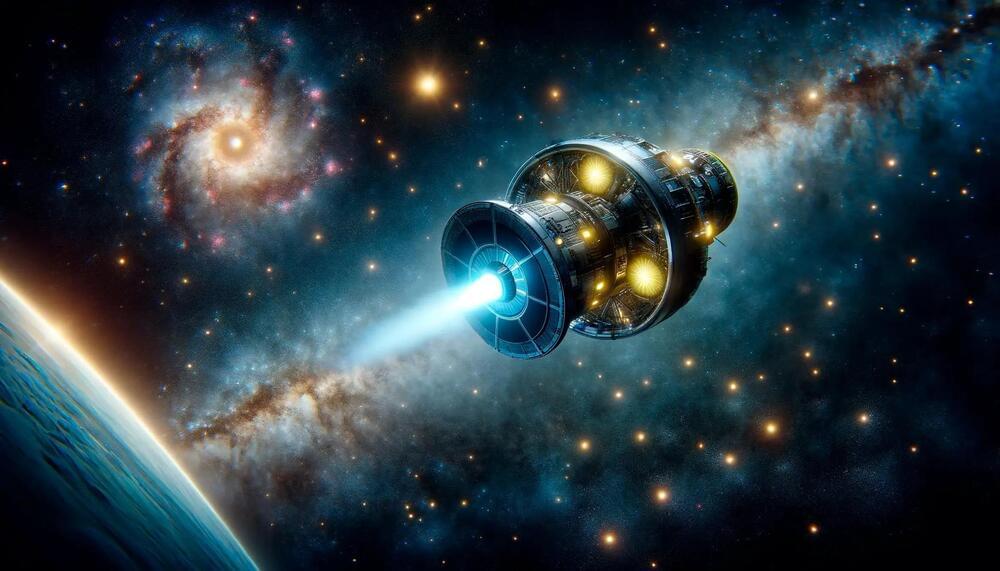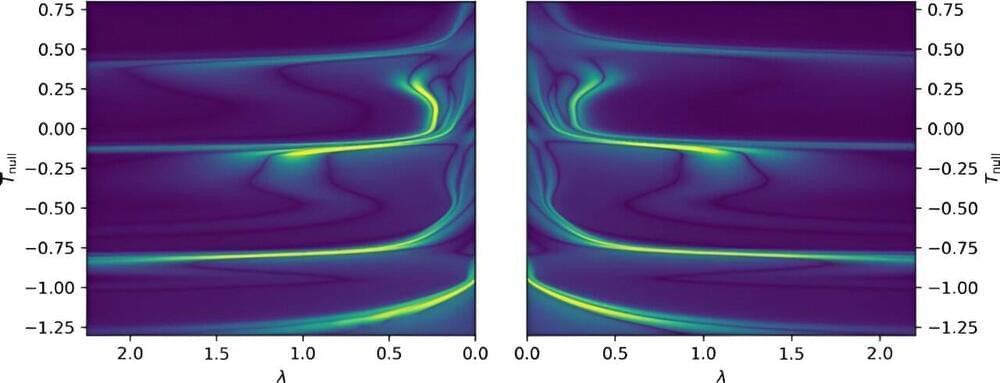11.21.23 Helmut Dannerbauer [email protected].

Artist’s impression of a protocluster of galaxies in the early Universe showing galaxies forming new stars and interacting with each other. Credit: M. Kornmesser/ESO.

11.21.23 Helmut Dannerbauer [email protected].

Artist’s impression of a protocluster of galaxies in the early Universe showing galaxies forming new stars and interacting with each other. Credit: M. Kornmesser/ESO.

Artificial Intelligence and Deep learning have brought about some great advancements in the field of technology. They are enabling robots to perform activities that were previously thought to be limited to human intelligence. AI is changing the way humans approach problems and bringing revolutionary transformations and solutions to almost every industry. Teaching machines to learn from massive amounts of data and make decisions or predictions based on that learning is the basic idea behind AI. Its application in scientific endeavors has given rise to some amazing tools that are gaining massive popularity in the AI community.
In Artificial Intelligence, Symbolic Regression has been playing an important role in the subtleties of scientific research. It basically focuses on algorithms that allow machines to interpret complicated patterns and correlations found in datasets by automating the search for analytic expressions. Scientists and researchers have been putting in efforts to explore the possible uses of Symbolic Regression.
Diving into the field of Symbolic Regression, a team of researchers has recently introduced Φ-SO, a Physical Symbolic Optimization framework. This method navigates the complexities of physics, where the presence of units is crucial. It automates the process of finding analytic expressions fitting complex datasets.

Wouldn’t it be nice to have a computer answer all of the biggest questions in the universe?
In his first year of graduate school, in 2013, Michael Wagman walked into his advisor’s office and asked, “Can you help me simulate the universe?”
Wagman, a theoretical physicist and associate scientist at the US Department of Energy’s Fermi National Accelerator Laboratory, thought it seemed like a reasonable question to ask. “We have all of these beautiful theoretical descriptions of how we think the world works, so I wanted to try and connect those formal laws of physics to my everyday experience of reality,” he says.

The DOE’s shipment of 0.5 kilograms of plutonium-238 to Los Alamos National Laboratory marks a milestone in producing fuel for NASA
Established in 1958, the National Aeronautics and Space Administration (NASA) is an independent agency of the United States Federal Government that succeeded the National Advisory Committee for Aeronautics (NACA). It is responsible for the civilian space program, as well as aeronautics and aerospace research. Its vision is “To discover and expand knowledge for the benefit of humanity.” Its core values are “safety, integrity, teamwork, excellence, and inclusion.” NASA conducts research, develops technology and launches missions to explore and study Earth, the solar system, and the universe beyond. It also works to advance the state of knowledge in a wide range of scientific fields, including Earth and space science, planetary science, astrophysics, and heliophysics, and it collaborates with private companies and international partners to achieve its goals.

A groundbreaking study by University of Leeds scientists proposes that Be stars are part of triple star systems, not binary systems as previously thought. This finding, derived from Gaia satellite data, challenges conventional star formation theories and could impact our knowledge of black holes, neutron stars, and gravitational waves.
Gravitational waves are distortions or ripples in the fabric of space and time. They were first detected in 2015 by the Advanced LIGO detectors and are produced by catastrophic events such as colliding black holes, supernovae, or merging neutron stars.
Sean Carroll speaking at the 6th International FQXi Conference, “Mind Matters: Intelligence and Agency in the Physical World.”
The Foundational Questions Institute (FQXi) catalyzes, supports, and disseminates research on questions at the foundations of physics and cosmology, particularly new frontiers and innovative ideas integral to a deep understanding of reality but unlikely to be supported by conventional funding sources.
Please join us at www.fqxi.org!

The supermassive black hole at the heart of our galaxy isn’t just spinning — it’s doing so at almost maximum speed, dragging anything near it along for the ride.
Physicists calculated the rotational speed of the Milky Way’s supermassive black hole, called Sagittarius A* (Sgr A•, by using NASA’s Chandra X-ray Observatory to view the X-rays and radio waves emanating from outflows of material.
In the very early universe, physics were weird. A process known as inflation, during which the universe went from a single infinitesimal point to everything we see today, was one such instance of those weird physics. Now, scientists from the Chinese Academy of Science have sifted through 15 years of pulsar timing data in order to put some constraints on what physics looks like.
The 15 years of data come from the North American Nanohertz Observatory for Gravitational Waves or NANOGrav’s goal is to use an unconventional way to detect gravitational waves —by looking at pulsars. These fast-spinning objects are commonly used as “clocks” in astronomical terms.
Back in 1983, a pair of astronomers (Ronald Hellings and George Downs) developed a method by which astronomers could use an array of these pulsars to check for shifts that gravitational waves might cause.

Black holes are regions in space where the gravitational pull is so strong that nothing can escape them, not even light. These fascinating regions have been the focus of countless studies, yet some of the physics underlying their formation is not yet fully understood.
Black holes are formed in what is known as gravitational collapse. This is essentially the contraction of a cosmological object, prompted by its own gravity drawing matter inward (i.e., toward the object’s center of gravity).
Whether or not such a collapsing object forms a black hole depends on the specific properties of the object. In some cases, an object may be very close to the threshold, having a hard time deciding whether or not to form a black hole. This type of collapse results in so-called critical phenomena.
The ability to jump forward and backwards in time has long fascinated science fiction writers and physicists alike. So is it really possible to travel into the past and the future?